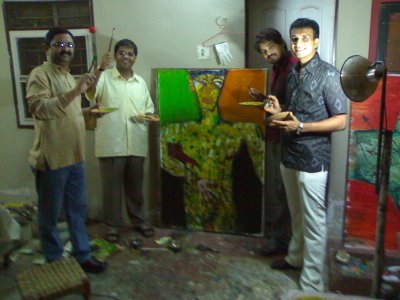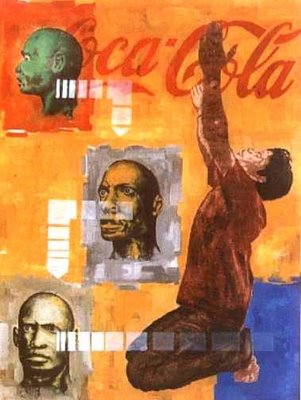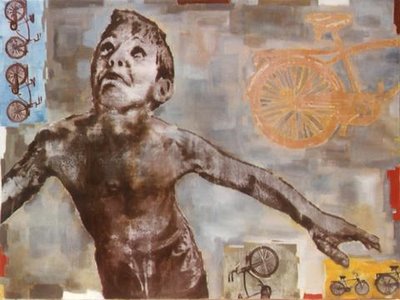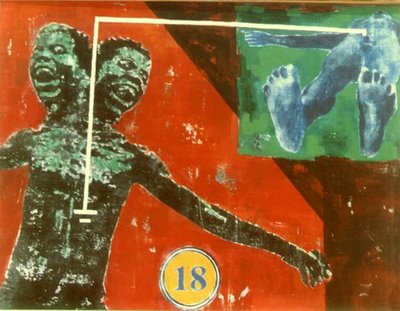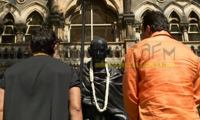 Posing for the Press: Bunty, Self, Chhabin
Posing for the Press: Bunty, Self, ChhabinFor the first time since the Congress defeat in the winter of 2003, I return to Papa’s Waterloo: Bastar. The visit is not premeditated. Late last afternoon, LK suggested paying obeisance before the primordial goddess Dantesvari in the township named after her, Dantewada; having nothing better to do, I agreed. The road isn’t what it used to be three years ago: potholes mar its increasingly moon-like surface; it becomes virtually nonexistent during the climb to Keshkal; and the construction of the bridge across the river Eeb, which was to have become operational in March 2004, shows no signs of being completed in the near future. The eighty-kilometer Jagdalpur-Geedam stretch is much worse, so we are advised to leave no later than 4 a.m. in order to make it in time for the 6 a.m. aarti. On the way, I see pilgrims by the hundreds walk on either side of the road; some of them are running.
At the temple-complex, Mr. Mahendra Karma’s two sons, Bunty and Chhabin, meet me. Bunty is the Chairman of the local municipality and Chhabin is the District Panchayat Chairman. We perform aarti together. Later, Bunty invites me to his house, which is adjacent to the temple. It overlooks the confluence of the Shankani and Dankani rivers. The names of both rivers are a part of almost all tantric mantras (incantations). Bunty’s house is called Hawa Mahal because it occupies the highest point (altitude) in Dantewada. I am told that it used to be the residence of the Prime Minister of the Maharaja of Jagdalpur. To my eyes, it looks like an idyllic colonial resort. The most obvious reminder of where I am- at the mouth of central India’s bloodiest war zone- comes from the fact that like everything else here, it is heavily guarded.
The Press has come to talk to me. Over cups of excellent ginger-tea, I tell them that both Mr. Karma and my father share a common goal: betterment of tribals, and the development of Chhattisgarh. As far as Bastar is concerned, both these objectives can be accomplished by following a Five-point program: (1) returning the ownership of the forests to the tribals by passage of the Tribal Bill (pending now before Parliament); (2) resumption of the Bodhghat Hydel Power project; (3) operationalization of the Raoghat iron ore mines; (4) construction of the Dondi-Lohara- Jagdalpur- Dantewada railway line; and (5) the setting up of steel plants (NMDC, Tata, Essar) after ensuring that tribals are given due compensation and a stake, in the form of company shares, in their common Fate. As far as Salwa Judum is concerned, I believe that while the thinking behind this effort is indeed creditable, the fact is that the Raman Singh Government has failed to protect the lives and property of tribals, who have been forcibly evicted from lands they have lived on for thousands of years and packed into makeshift camps, where they continue to live in inhuman conditions. I end by saying that both leaders might have certain differences of opinions, which are only natural, but they remain firmly united under the leadership of Mrs. Sonia Gandhi.
 With Bunty Karma: Comrades-in-arms.
With Bunty Karma: Comrades-in-arms. Before returning to Jagdalpur (where I have lunch with the erstwhile Royal Family at their Palace), I pose with Mr. Karma’s two sons. The press photographers are only too pleased. I promise them that I will return soon.
A friend- S.- I had hoped to spend time with hasn’t quite woken up, even at 4 p.m. Next time perhaps?
AJ Read More (आगे और पढ़ें)......

